
There is a bridge here which takes a railway over the canal.
| Newcastle City Marina | 5½ furlongs | |
| Tyne Bridge | 4½ furlongs | |
| Armstrong Swing Bridge | 3¾ furlongs | |
| High Level Bridge | 3½ furlongs | |
| Queen Elizabeth II Metro Bridge | 1 furlong | |
| King Edward VII Bridge | ||
| Redheugh Bridge | 1¼ furlongs | |
| Dunston Staiths | 5½ furlongs | |
| Tyne - Team Junction | 7¼ furlongs | |
| Tyne - Derwent Junction | 2 miles, 5¾ furlongs | |
| Scotswood Bridge | 3 miles, 2 furlongs | |
Why not log in and add some (select "External websites" from the menu (sometimes this is under "Edit"))?
Mouseover for more information or show routes to facility
No information
CanalPlan has no information on any of the following facilities within range:water point
rubbish disposal
chemical toilet disposal
place to turn
self-operated pump-out
boatyard pump-out
Wikipedia has a page about King Edward VII Bridge
The King Edward VII Bridge is a railway bridge spanning the River Tyne between Newcastle upon Tyne and Gateshead, in North East England. It is a Grade II listed structure. The King Edward VII bridge has been described as “Britain’s last great railway bridge”.
The bridge was designed and engineered by Charles A. Harrison, the Chief Civil Engineer of the North Eastern Railway, and built by the Cleveland Bridge & Engineering Company in Darlington. The bridge consists of four lattice steel spans resting on concrete piers. The total length of the bridge is 1,150 ft (350 m) and 112 ft (34 m) above high water mark. The total cost was over £500,000.
The bridge was opened by King Edward VII and Queen Alexandra on 10 July 1906, despite being still unfinished at this time. General traffic began using the bridge on 1 October 1906. Prior to its completion, to reach Newcastle railway station, trains used the older High Level Bridge and had to leave the station in the same direction they entered by reversing. The construction of the King Edward VII Bridge provided four more railway tracks and a direct line through the station, enabling trains to arrive or depart from either side, greatly easing congestion.

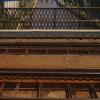
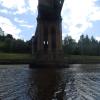
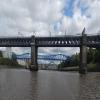
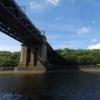
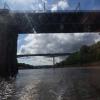
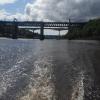
![The River Tyne around the King Edward Bridge. Shows the location of [[4349341]]. by Mike Quinn – 10 February 2015](https://s3.geograph.org.uk/geophotos/04/34/93/4349343_8a729b2f_120x120.jpg)






![The River Tyne and the King Edward Bridge (2). See [[4349299]]. by Mike Quinn – 10 February 2015](https://s1.geograph.org.uk/geophotos/04/34/93/4349305_35888f9e_120x120.jpg)





















